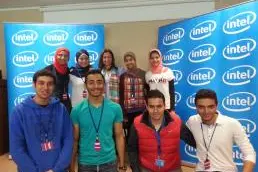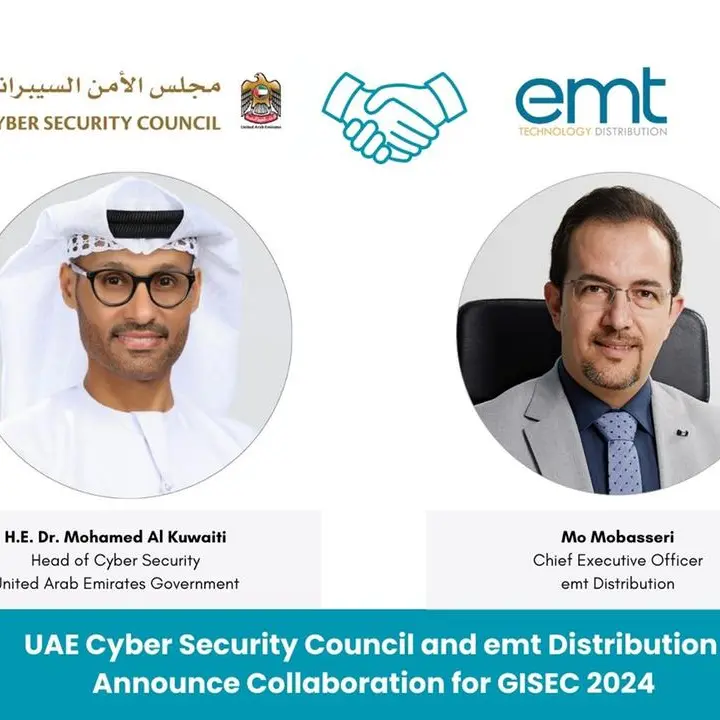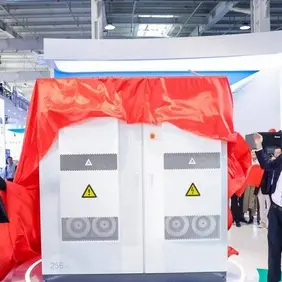PHOTO
Eight innovative projects were nominated to participate at Intel ISEF USA 2015 in May
Egypt, Cairo, 29 April 2015
In preparation for the finals of Intel International Science and Engineering Fair (Intel ISEF) on May 10 - 15, 2015 in the USA, Intel Egypt today announced the local finalists of the Intel ISEF competition that took place across Egypt. A total of eight innovative projects were nominated from the local fairs to participate in the international competition, which will be held in Pittsburgh, Pennsylvania. Intel's three local fairs were hosted in the Educational City in 6th of October district in Cairo from February 16th to 19th, in Aswan Youth City from February 27th to March 2nd, and in Bibliotheca of Alexandrina from March 16th to 18th.
Intel ISEF, a program of Society for Science & the Public (SSP), is an initiative that reaches out to students between the ages of 14-18, specializing in the fields of science and engineering. Intel ISEF is the world's largest pre-college science fair competition, where the students have a chance to explore, discover and innovate. This initiative encourages students to tackle challenging scientific questions, using authentic research practices to create solutions to the problems of tomorrow.
The final projects chosen included research on novel potent inhibitors for CIP2A using the oncogenic identification method, CA15-3 in early detection of breast cancer recurrence, the continued use of chlorine in water stations leading to perplexing health problems such as cancer, hydrogen as the future alternative fuel and the improvement of lip reading imitation skills to understand those with speech disabilities.
"We are extremely impressed with the innovative ideas that these finalists have generated," stated Nihal Abbas, Egypt Corporate Affairs Manager. "It is always encouraging to see such brilliant minds participating at Intel's Science and Engineering Local Fairs annually to showcase their talents to the world. We continue to look forward to continued scientific entrepreneurship in the coming years to support the development of our society through this innovative culture."
Intel is celebrating Egypt's participation in ISEF for the past 10 years. In 2005, Egypt participated in Intel ISEF with merely one project from one local fair. This year, eight projects were nominated from three local fairs. Intel is committed to provide an increased number of Egyptian youth an annual opportunity to showcase their research and compete for more than US $5 million in prizes against 1,700 high school student from over 70 countries.
Listed below are the 8 winners with their corresponding projects, who are representing Egypt and will be competing in the fair:
1. Project: Novel Potent Inhibitors for CIP2A with Oncogenic Identification Method
Category: Science and Medicine
Student: Mohamed Tarek Mansour
Cancerous inhibitor of tumor suppressor PP2A is a novel target against human cancers as it's expressed in 96% of human cancers. CIP2A plays a major role in regulating tumor progression as it interferes with cellular pathways inhibiting apoptosis and giving tumor more resistance against chemotherapy. CIP2A also induces cancer stem cells resistance against target therapy induced apoptosis by inducing phosphorylation of BAD through BCl-2 pathway. Mohamed Mansour combined the homology modelling approach with quality estimation and validation for a reliable model for this OncoProtien with solvent mapping for potential probes identification. Novel inhibitors were identified through docking studies, pharmacophore building and virtual screening of chemical molecules databases. The docking/scoring methods of AutoDock were validated by reproducing the docking interactions and poses of identified small molecular inhibitors with smallest root mean square deviations.
Next, pharmacophore-based virtual screening on four chemical molecules databases; Open NCI Database, Zinc, Maybridge0 and drug bank was done resulting in 2157 hit compounds that were subsequently subjected to filtration according to their binding free energies, interactions exhibited with the receptors, in silico ADMET properties and Lipinski's rule of five for molecule drugability. Finally, 7 compounds were selected as they exhibited excellent binding interactions with the OncoProtein in addition to their neglect-able toxicity.c-myc expression.
2. Project: NH device for detecting breast cancer at home
Category: Bioengineering
Student: Heba Mostafa Ahmed & Norhan Kamal Mohamed Al Bassiouni
96% of patients with local and systemic breast recurrence have elevated CA15-3, which can be used to predict recurrence earlier than radiological and clinical criteria. A 25% increase in the serum CA15-3 is associated with progression of carcinoma. A 50% decrease in serum CA15-3 is associated with response to treatment. It is worth noting that CA15-3 is more sensitive than CEA in early detection of breast cancer recurrence. In combination with CA125, CA15-3 has also been shown to be useful in early detection of relapse of ovarian cancer. CA15-3 levels are also increased in colon, lung and hepatic tumors.
NH device has been developed as an aid for women's breast awareness. It is a hand held device to be used by women at home. It will be sold to consumers through pharmacy channels and the internet. The retail price will be in the region of 200 LE.
3. Project: Crystal Clear
Category: Environment Management
Student: Noha Shoukri Abdel Aziz & Asmaa Atef Ibrahim Hassan
More than 3.4 million people die from water each year, and 76% of Egyptian rural waters are mixed with drainage water, which contributes to a formidable mortality rate. The continuous usage of chlorine and other methods in water stations lead to perplexing health problems like cancer, kidney failure and cirrhosis. In addition, the population no longer has access to a sustainable source of drinkable water. The overpopulation and the resulting overconsumption of water has significantly influenced the availability of fresh water that UV lamps are lowered by the presence of organic matter, iron, sulfites, nitrites, and turbidity as these particles absorb UV radiation and shield microbes from being hit with UV rays. The organic matter is always present in water, and those substances have been found in Egyptian water researches. Other methods like RO, chemical disinfectants, distillation and others are highly expensive and need too much power.
Using zeolite gravels, poly propylene, Boehmite Nano membrane, PA-CNT membrane, Noha and Asmaa will achieve the following: high mechanical (200◦C) thermal stability, (90% or more) electric charge stability, no more than 10% harmful residues, the least possible chemical usage (10% or less), least possible pressure applied (up to 60bar), ease of use, high flow rate (100L/h/m^2 or more), 90% net efficiency including; (80% salt rejection, 90% heavy metals removal and 90% biological contaminants removal), and finally, sustainability and cheap cost (no more than $70).
4. Project: Hydrogen as an alternative fuel
Category: Environment Management
Student: Korolos Moussa Youssef & Rahaf Mohamed Kamel Abdelsamad
Fossil fuel is known for being high-priced, contaminated, and a non-renewable source of energy. Hence, Korolos and Rahaf's challenge was to investigate an alternative pathway of energy. They found that hydrogen is high in energy; however, an engine that burns pure hydrogen produces almost no pollution.
Nowadays, because of the increasing environmental issues, and the demand for renewable clean energy sources, semiconductor photo-catalysis has drawn considerable attention. Many semiconductors, such as CdS, TiO2, Fe2O3, and Cu2O which have narrow band gap, can utilize the visible light in the solar spectrum.
Natural water splitting, activated by sunlight and catalyzed by metal-organic enzymes, is at the basis of the earth life. In fact, in presence of sunlight and water, the natural photosynthesis occurring on leaves' surface synthesizes hydrogen, oxygen and sugar. In a very complex way, the sunlight is converted into chemical energy (H2O+ CO2 → sugar + O2) that meets the needs of plant life. Hence, Korolos and Rahaf were inspired by the plant cycle and were led to think about using solar energy and water to produce hydrogen. However, water can't absorb sunlight, so they needed a catalyst and electrolyte to help with that issue. In water's case, it was (2H2O → 2H2+ O2), as the photo-catalyst semi-conductor will act like enzymes in plant life. They found that they can use only these things to complete the water splitting process successfully and to store the solar energy in super-capacitors that are based on graphene Nano-sheets electrodes by making a Nano composite.
5. Project: CCF15
Category: Mechanical & Electrical Engineering
Student: Abdel Aziz Ahmed Al Masri & Fares Essam Helmi
Abdel Aziz and Fares researched a new kind of multi-rotor, which mainly depends on controlling most of the forces and vectors to produce maneuverability and accuracy, while at a high-speed faster than flying wing tri-copters. One of the most important points is that the multi-rotor can move, fly, and run without fluctuating, and keeps the body at a zero-degree position, which gives it high accuracy and prevents the loss of energy when moving. The design of the plane allows it to control the vectors of the forces and some values, while also generating a lift due to the difference of the air pressure above and below the plane. Thus, Abdel Aziz and Fares created a plane with high-speed, enormous maneuverability, easier controlling, high-accuracy, small-size, unfluctuating movements, seven controlled forces from nine acting forces, and finally, a new way to generate lift with the Bernoly law of pressure.
6. Project: Lip-reading
Category: Medical Research
Student: Ahmed Al Tebani & Ahmed Mesbah
Speech disabilities have an incident rate of more than 360 million people worldwide, according to the World Health Organization. Speech is the most natural communication means for humans. This means it is extremely difficult for a speech-handicapped person who cannot utter their clear voice. Their main means are by writing or sign language; however, these means are a burden for both the speaker and listener. Recognizing the content of speech based on observing the speaker's lip movements, is called 'lip-reading', it has become a hot topic for human computer interaction. Therefore, Ahmed and Ahmed researched lip-reading, which focuses on visual lip motion. Ahmed and Ahmed's work proposes a new novel lip reading system to aid muted people use their lips as a mean of communication with normal people. The major difficulty of the lip-reading system is the extraction of the visual speech descriptors. Ahmed and Ahmed's automatic lip reading system consists of two main modules: 1) a pre-processing module able to extract lip geometry information from the video sequence and 2) a classification module to identify the visual speech based on lip movements. The two represent a hybrid framework for lip reading using the MS Kinect camera to extract 18 feature points' coordinates by MS Kinect SDK for classification using KNN.
7. Project: Rice Straw Power
Category: Environment Management
Student: Yasmine Yehia Mostafa
Egypt's main source of water is the Nile River. Unfortunately, it is not clean enough for drinking, and will not last forever. Today, the treatment of different forms of polluted water such as: grey water, black water and sea water has entered the front lines of debate. Yasmine noticed that the world is facing a threatening future, and one of the hardest local challenges is how to improve clean sources of water. Yasmine decided to begin with solving the problems of grey water by scanning the previous solutions, but not all of them were satisfactory for all the requirements that were need. Thus, she found her own solution that helps to solve not only the one problem, but also the three grand challenges which are air, water pollution and lack of energy. In addition, her solution also produces pozzolanic material, which can be used in concrete and the creation of vitamin "B". Her solution depends mainly on rice straw burning, and uses the heat to evaporate water after removing the solids and the organic materials from it. Using a biological filter, Yasmine took the gases and produced biodiesel and hydrogen power, and used the rice straw ash to make pozzolanic material. Yasmine chose this solution due to its availability and cheap materials. After several tests, Yasmine achieved her results; she produced drinkable water, biodiesel and a significant amount of hydrogen power.
8. Project: Activating the latent energy for people with visual needs
Category: Behavioral and Social Sciences (BEHA)
Student: Amira Mahmoud Abdallahi
Amira's project targets the visually impaired and blind, aiming to develop their skills of learning and psychological adaptation using internal energy through focusing on the Seven Energy Centres Chakras Methodology. Amira presents the merits and problems of each chakra and proposing solutions. Common points between different centers have been pinpointed to facilitate the activation process, which has been achieved through analyzing and linking data (models and tables). Amira found that the first and the third chakras (the root and the solar plexus) are concerned with the problems and merits that have to do with phycology, and that the sixth and the seventh chakras (the third eye and the crown chakra) are concerned with the problems and merits that have to do with learning and recognition. Hence, Amira focuses on the mentioned chakras, which have been activated through:
1. Raising awareness that the energy exists.
2. Direct and indirect guidance.
3. Being certain that the energy exists.
4. Imagining, feeling, and focusing on the energy centres. Energy lies with focus.
5. Using the power of words and raising awareness about its effectiveness.
6. Deep breathing.
7. Using the technique of breathing colours.
8. Using colours of clothes and the surrounding environment.
9. The methods clarified in the first model of each of the four chakras.
The methodology has been applied to 22 university students studying Business Administration, International Transport and Mass Communication. Outstanding results in learning, including distinction, have been achieved, which would enhance the society's impression, and hence, eliminate the social gap and achieve psychological adaptation if widely applied.
-Ends-
About Intel
Intel (NASDAQ: INTC) is a world leader in computing innovation. The company designs and builds the essential technologies that serve as the foundation for the world's computing devices. As a leader in corporate responsibility and sustainability, Intel also manufactures the world's first commercially available "conflict-free" microprocessors. Additional information about Intel is available at newsroom.intel.com and blogs.intel.com, and about Intel's conflict-free efforts at conflictfree.intel.com.
CONTACT:
Mayar Naguib
Intel Corporation
+ 202-24-61-5449
Mayar.naguib@intel.com
Tamer Hassan
Hill + Knowlton
+2 0111 7883335
Tamer.hassan@hillandknowlton.com
© Press Release 2015











